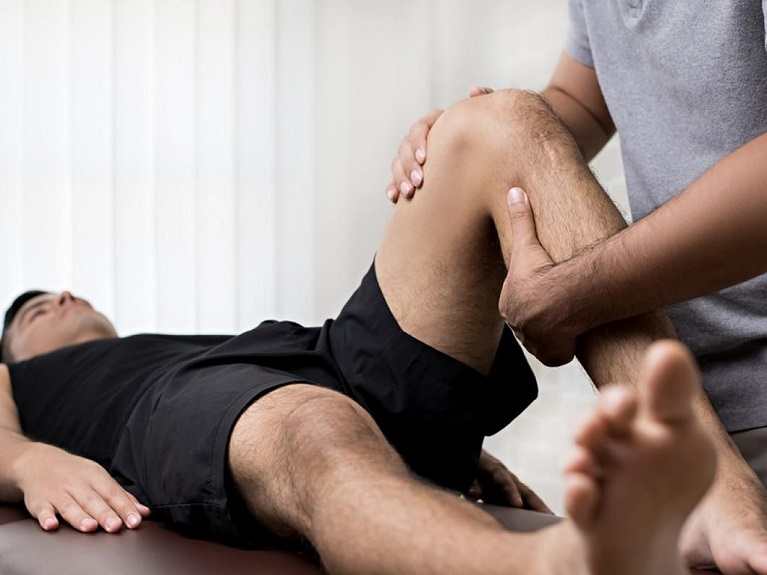Expert Secrets from a Top Chiropractor for Lasting Spine Relief
Wiki Article
Checking Out Spinal Decompression Strategies: What You Required to Know for Better Spine Treatment
Spinal decompression techniques are crucial for individuals experiencing persistent neck and back pain or spinal concerns. These methods range from non-invasive therapies to surgical choices, each designed to soothe pressure on the spinal column. Understanding these methods is very important for efficient back care. Not all methods are appropriate for every problem. The subtleties behind each method warrant better examination, as they can considerably affect recovery and overall health and wellness results. What variables should one think about before deciding?Recognizing Spinal Decompression
Although spinal decompression may sound complicated, it essentially describes a range of strategies focused on reducing pressure on the spine and surrounding nerves. Back Decompression Therapy. The spine is an important framework that sustains the body and secures crucial neurological pathways. When compression happens, it can cause discomfort, pain, and decreased movement. Comprehending spinal decompression includes identifying the causes of this stress, such as herniated discs, spinal constriction, or injury. By resolving these underlying issues, decompression techniques look for to bring back appropriate positioning and feature. This process can involve both non-surgical and medical techniques, tailored to individual person needs. The objective is to improve the lifestyle by easing discomfort, improving posture, and promoting much better movement. As awareness of spinal health and wellness grows, the value of recognizing spinal decompression becomes progressively pertinent for those seeking efficient treatment alternativesTypical Spinal Decompression Strategies
Spinal decompression strategies include a variety of approaches developed to ease pressure on the back and its connected structures. These strategies can be broadly classified into medical and non-surgical techniques. Non-surgical techniques include spinal grip, where gentle pulling pressures are related to the back, producing space in between vertebrae. This can ease nerve compression and promote recovery. Chiropractic changes also drop under this group, focusing on straightening the back to boost feature.Surgical decompression methods include treatments such as laminectomy, where a part of the vertebra is gotten rid of to ease stress on the spinal cord or nerves. Discectomy, one more medical option, involves the removal of herniated disc material. Furthermore, minimally intrusive methods, like endoscopic discectomy, are obtaining popularity due to their decreased healing times. Each strategy offers a certain objective and might be picked based on individual client demands and the severity of their spinal condition.
Benefits of Spinal Decompression
When taking into consideration the various techniques to managing spinal issues, the benefits of spinal decompression methods end up being noticeable. These approaches aim to ease stress on the spinal discs and nerves, which can alleviate pain and enhance general spinal health and wellness. By producing area in between vertebrae, decompression advertises enhanced blood flow and nutrient circulation to the impacted locations, assisting in recovery and healing.In addition, spinal decompression can help restore the all-natural placement of the back, possibly reducing the danger of future injuries. Individuals commonly report increased movement and flexibility list below therapy, bring about a better high quality of life. The reduction in pressure can decrease signs connected with conditions such as herniated discs, sciatic nerve pain, and spinal constriction, using a non-invasive option to more intrusive procedures. Generally, spinal decompression techniques provide a series of healing and physical benefits, making them an important component of extensive spinal column care.

Who Can Gain From Spinal Decompression?
Individuals struggling with chronic pain in the back, herniated discs, or spinal constriction might find considerable relief with spinal decompression techniques. This non-invasive therapy can be particularly valuable for those experiencing nerve compression symptoms, such as prickling, numbness, or weak point in the arm or legs. Athletes recouping from injuries or individuals with degenerative disc condition may additionally think about spinal decompression as a practical alternative for pain administration and improved wheelchair.Candidates for spinal decompression typically include those that have actually not reacted well to typical treatments, such as medications or physical therapy. It can likewise function as a choice for clients seeking to prevent surgical intervention. In general, spinal decompression methods can supply a healing alternative for various individuals dealing with spinal problems, assisting them reclaim a better of life and practical capability. Consulting a health care specialist is crucial to figure out the suitability of this therapy for certain conditions.
Considerations and Safety Measures for Spinal Decompression

The sort of spinal decompression technique-- whether surgical or non-surgical-- must align with the person's details condition and general wellness status. Monitoring throughout the treatment is important to attend to any damaging reactions promptly. Clients must likewise recognize that spinal decompression is not a one-size-fits-all service; an extensive therapy plan may consist of physical treatment or lifestyle modifications to sustain recuperation. Overall, adhering to these preventative measures can significantly improve the efficacy of spinal decompression therapies and advertise ideal spinal column wellness.

Often Asked Concerns
The length of time Does a Common Spinal Decompression Session Last?
A common spinal decompression session lasts between 30 to 45 minutes. This duration permits perfect treatment while guaranteeing the client stays comfy and obtains ample focus to their certain spinal problems and requirements.Can Spinal Decompression Be Done at Home?
Spinal decompression can be performed at home through specific workouts and tools, such as inversion tables or back dental braces. Nevertheless, assessment with a healthcare professional is advised to assure safety and security and performance in private situations.Is Spinal Decompression Painful?
Spinal decompression is normally not excruciating; nonetheless, people may experience moderate discomfort or pressure throughout the treatment. Discomfort degrees can differ based upon the person's problem and the method used for decompression.The Number Of Procedure Are Usually Needed for Relief?
Generally, people may call for 6 to 10 sessions of spinal decompression therapy to experience considerable alleviation (Chiropractor). Nevertheless, the exact number can vary based upon private problems and responses to therapy, requiring tailored analysis by healthcare professionalsAre There Any Type Of Age Limitations for Spinal Decompression?
There are usually no stringent age constraints for spinal decompression treatment. Suitability might depend on individual health problems and the particular strategy used, so consultation with a health care professional is suggested for personalized advice.Spinal decompression methods are essential for people experiencing chronic back discomfort or spinal problems. Spinal decompression might appear complex, it basically refers to a range of methods intended at reducing stress on the spinal cable and surrounding nerves. When thinking about the different methods to taking care of spinal issues, the Family Chiropractic advantages of spinal decompression strategies come to be apparent. Individuals suffering from chronic back discomfort, herniated discs, or spinal constriction might find substantial alleviation with spinal decompression methods. Overall, spinal decompression methods can supply a therapeutic choice for various individuals dealing with spinal problems, helping them restore a greater quality of life and practical ability.
Report this wiki page